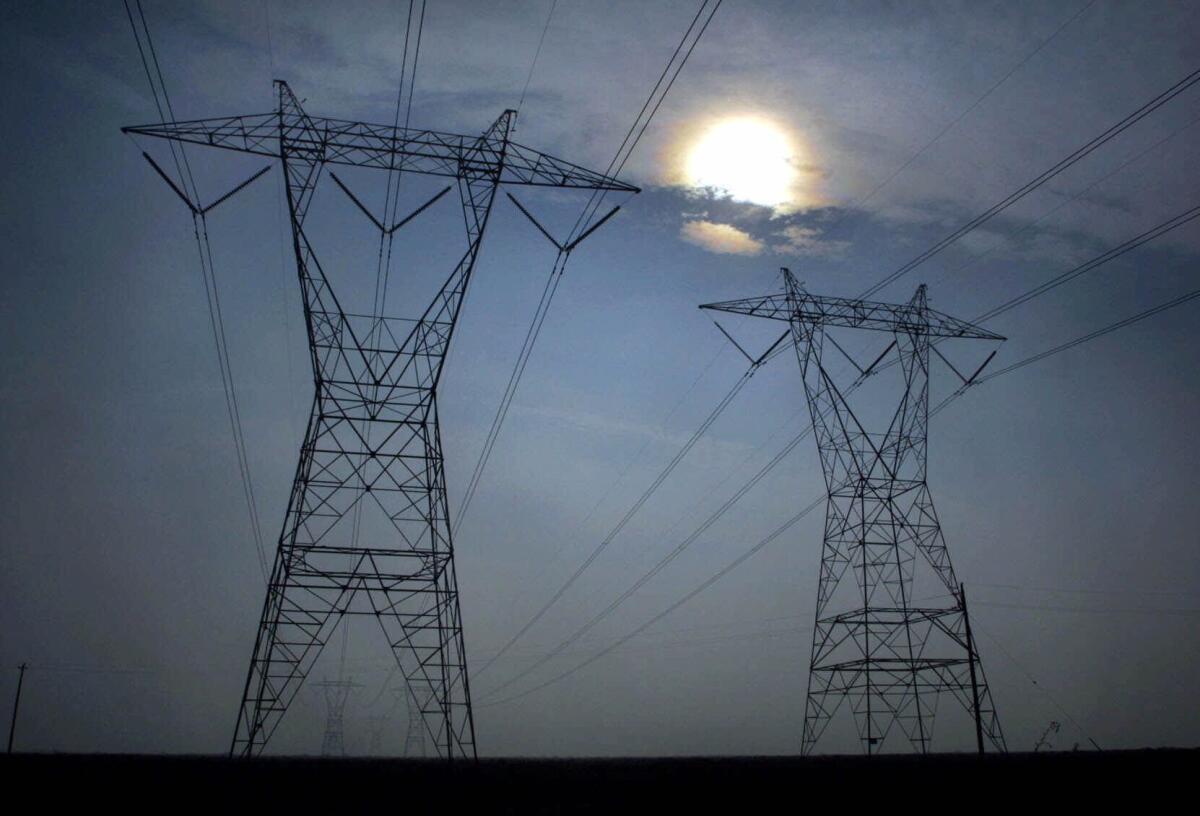Clean energy forces messy changes for utilities and regulators

California’s push for clean energy is forcing the players — consumers, regulators, utilities and fuel producers — into an uncomfortable dance that has each stepping on others’ toes.
But all must learn to perform together or risk the reliability of crucial energy services, representatives of the various quarters said during the first of three community forums on the future of energy regulation convened by California Public Utilities Commission.
For the record:
11:00 p.m. Nov. 15, 2024This article incorrectly identifies battery company Sonnen Inc. as Sonnen Batterie, which is the name of a Sonnen Inc. product.
Edward Randolph, director of the commission’s energy division, issued a word of caution: The energy sector simply must make changes that line up with the state’s growing mandates for clean energy.
“If they don’t want to be a buggy-and-whip company, they have to adjust,” Randolph said during Thursday’s meeting at the commission’s San Francisco headquarters.
George Minter, a regional vice president for Southern California Gas Co., said his company is willing to change, in part by focusing on production of clean gas as an alternative to fossil fuel.
“The challenge is how do we address the use of our gas system, the use of our electric system?” Minter said.
Challenges abound as utility companies face lower electricity consumption because of increases in energy efficiency and consumers producing their own power; oil refiners must determine how their industry will operate in the slow shift to electric vehicles. And businesses and consumers are looking for ways to cut their costs.
“How we all play together and how we all dance together is looking different,” said Catherine Reheis-Boyd, president of the Western State Petroleum Assn., which represents oil refiners. “We’re all in the same space.”
Ultimately, the state is pushing toward a carbon-free electric grid. Current requirements have set mandates for 50% of electricity produced by clean energy by 2030. Senate President Pro Tem Kevin de Leon wants to raise the bar to 100% clean energy by 2045.
Even regulators are trying to figure out how to meet the demands.
At the January unveiling of a Tesla Inc. electricity storage system for Southern California Edison, commission President Michael Picker marveled at how rapidly advancements in technology are changing the energy landscape.
“The innovation taking place occurs faster than we can regulate,” Picker said during the event at Edison’s Mira Loma substation in Ontario.
Within the last decade, the electricity industry has undergone a dramatic shift as solar power and developments in electricity storage have become focal points of the new energy economy.
Last year, solar was the source of 39% of new electricity generation deployed around the country, followed by natural gas at 29%.
A key shift: homeowners and businesses have become power producers themselves with rooftop solar panels. Utilities never contemplated consumers sending power to the electric grid when the network of power lines was created a century ago.
“They’re looking at 50% of their load leaving, maybe 80% of their load, leaving over time,” Matthew Freedman, an attorney for the Utility Reform Network, an advocacy organization that represents consumers, said during Thursday’s forum.
The effect of the changes, Freedman said, could adversely affect not only businesses but also consumers.
“As we design policies, we need to be mindful about how technologies and costs are going to change,” Freedman said.
Tesla chief Elon Musk is launching the latest version of rooftop solar generation products, a new solar shingle product he demonstrated last fall that would replace the boxy products that currently attach to building rooftops. Musk tweeted Friday that the company will begin taking orders in April.
Tesla and other companies such as Sonnen Batterie also have developed home energy storage options that allow consumers to supply virtually all their electricity needs themselves, although cost for the battery systems remains high.
Coupled with smart technology, the solar and storage packages are increasingly giving consumers greater control of their energy use.
Meanwhile, California regulators and their counterparts nationwide are grappling with the transition from a totally centralized power system dominated by big utilities to one that is more interactive, in which customers buy from and sell power to utilities.
Part of the concern is that as consumers increase their independence from the utility companies, there will be a lack of financial support for the electric grid.
The utility industry argues that power companies provide the cheapest way to produce renewable energy such as solar and wind, which helps meet the state’s 50% clean energy mandate.
Richard McMahon, vice president of energy supply and finance at the Edison Electric Institute, a utility industry trade group, said in a recent interview that utility-scale solar provides broad benefits, including ensuring reliability of service and lower costs.
Citing an MIT study, McMahon said the installed cost of large-scale solar is “more than 80% less than private rooftop solar.”
“EEI’s member companies will continue to invest in America’s energy future and remain focused on providing reliable, affordable and increasingly clean energy to all customers,” McMahon said.
For more energy news, follow Ivan Penn on Twitter: @ivanlpenn
ALSO
Southern California Gas taps Aliso Canyon amid conservation warnings
Rooftop solar installations rising but pace of growth falls
Elon Musk’s wager that Tesla can fix South Australia’s blackouts brings the energy future closer
More to Read
Inside the business of entertainment
The Wide Shot brings you news, analysis and insights on everything from streaming wars to production — and what it all means for the future.
You may occasionally receive promotional content from the Los Angeles Times.










